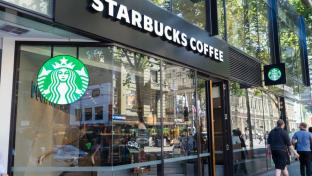Redefining Retail Through the Customer Gateway
The customer journey, especially in retail, is highly unpredictable. In the earlier days, retail meant brick-and-mortar stores to customers. With the advent of the Internet, companies like Amazon brought the trend of online business and gave brick-and-mortar stores a big blow.
However, over time, consumers’ priorities changed, and the consumer upgraded himself/herself into a smart consumer — they wanted to touch and feel the product while not compromising on their convenience.
This gave birth to omnichannel retail. It’s no longer brick-and-mortar stores vs online retail, but it’s brick-and-mortar stores with online retail.
COVID-19: The Omnichannel killer
With omnichannel, the customer becomes the center of strategy and they can place order and purchase products from any channel, anytime and anywhere. However, in recent times of Covid-19 when there are supply chain, financial and business challenges, serving customers at every touchpoint is difficult, and this situation will have a long-lasting impact.
This has shortened the lifecycle of omnichannel and has given birth to harmonized retail. Harmonized retail focuses on reaching efficiently at those customer touchpoints where customer has maximum buying propensity and is most attractive to the consumers.
Harmonized Retail: the road ahead
So let’s talk about the way forward. Harmonized retail highlights that today’s customer is not dependent on any channel. In fact, customer is the channel — they may walk into the store and try the product, but then order the same product online via their app.
Your customer is the point of sale wherever they go. Hence, it’s very important for retailers to utilize customer insights to understand the customer journey through a blended channel of digital technology, physical outlets and customer experience.
The black swan event of Covid-19 is going to change consumers’ behavior in two ways: 1. Consumers will be more inclined toward online retail. 2. Consumers might be hesitant about human contact even after the lockdown ends and will not prefer spending a lot of time in stores.
Due to this shift in consumer behavior, retail channels would have to evolve themselves to embrace new trends and new ways to serve customers. The currently nascent trend of buy-online-pickup-in-store (BOPIS) is going to increase. The main factor for retailers to note here is that the traditional billing counters must be fine-tuned as per the Harmonized retail.
These counters are no longer selling counters but are an experience center for the customer where they are welcomed and they can pick up the products they have ordered online, return the products and connect with people. Thus, in harmonized retail setup, these checkout points are no longer responsible for billing the products, but they are the experience centers to make the consumer happy and satisfied.
Another trend that will pick up with harmonized retail is the delivery channel optimization for consumer’s convenience. Companies like Audi have realized this need for upgradation. Under their Audi Connect Easy Delivery program, Audi has partnered with DHL and Amazon to deliver your package (ordered from Amazon) directly to where your Audi is parked. On the day of delivery, the owner of the car would agree for location tracking of the car for a fixed time slot and DHL drones/ DHL delivery executives will locate the car, use a code to open your car’s trunk and deliver the parcel, thereby improving experience and convenience for customers and minimizing human contact.
Ulta Beauty has understood the needs of their customers and have fine-tuned themselves into a harmonized retail organization. The customer decides how he/she wants to engage with the brand, and Ulta completely supports them in this journey.
Suppose a customer checks out a product online on the Ulta website, looks at its features etc. but doesn’t buy it. Now, if the customer walks into an Ulta store, he or she might get vouchers related to that product.
Moreover, Ulta offers its customers a virtual tour of their stores to give them an immersive experience and customers can also connect with an Ulta store customer representative electronically through video connects. So the next time the customer walks into the store, he or he can directly connect with the same person they have already connected before. This helps Ulta to provide more personalized experience for their customers.
Technology: An enabler for Harmonized Retail
With new ways of retail, comes in new ways of leveraging technology. Harmonized retail when clubbed with technology enablers like social media analytics, helps in understanding the customer better by checking their buying propensity and experience per square foot. The current online channels talk about pay per click while the metric for offline stores is sales per square foot, but with harmonized retail the key metric to look for is experience per square foot where the company’s main focus is about offering their customers not just the products but a whole experience.
Another technology enabler that will blend in with harmonized retail is augmented/virtual reality, where there will be virtual stores to interact and provide an immersive experience to the customers, offer them with the virtual touch and feel of the product while they are sitting on their sofa.
Every company wants their customers to love their brand and stay loyal to the brand, and harmonized retail is the finest means to ensure that.
Siddharth Rawat is a consultant, data analytics and AI, with Wipro.





